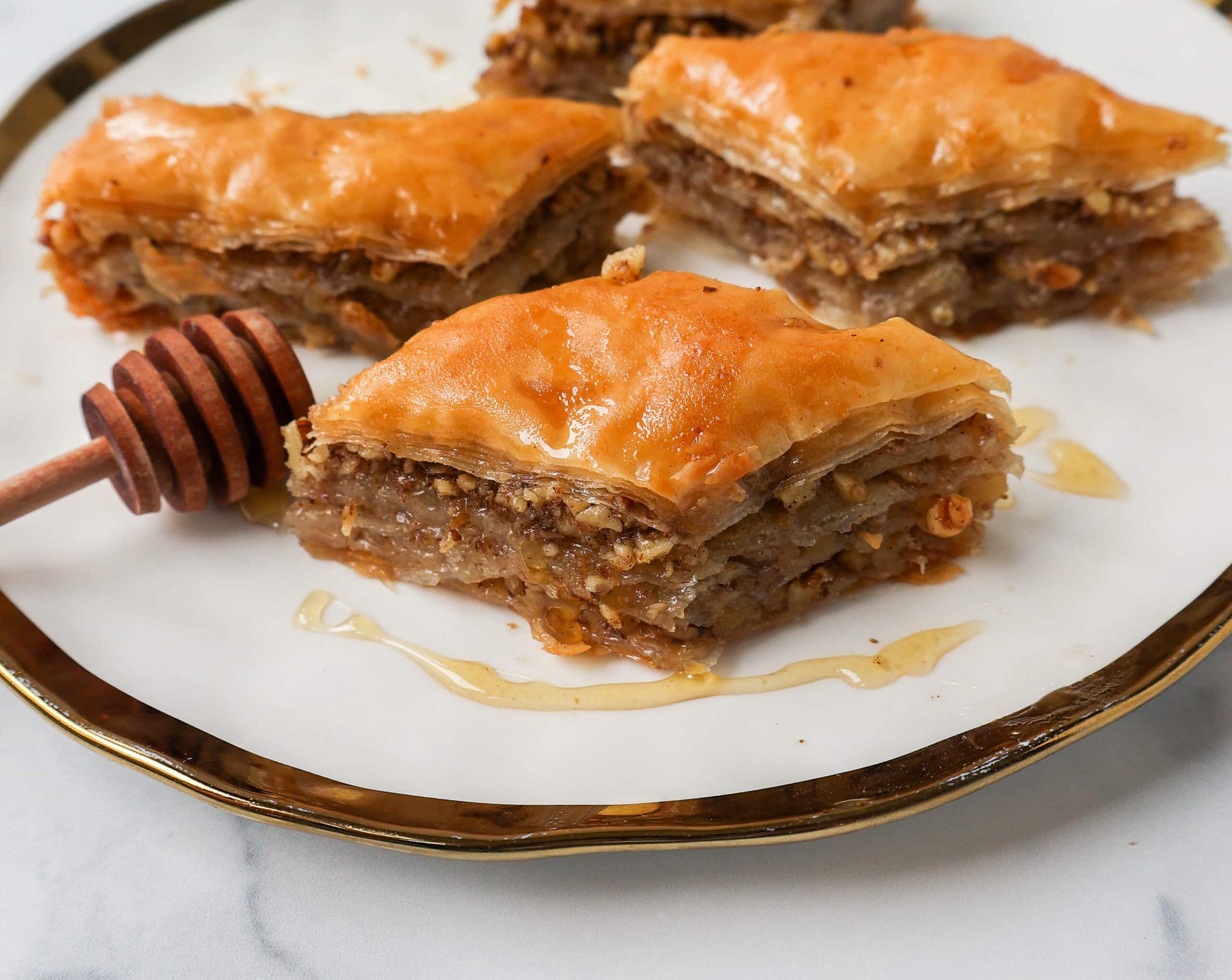Introduction
Greek Baklava, with its luscious layers of buttery phyllo pastry, crunchy nuts, and sweet, aromatic honey, is a beloved dessert that has tantalized taste buds for centuries. This delectable treat is a true masterpiece of Mediterranean cuisine, offering a perfect blend of textures and flavors. In this blog post, we’ll explore the history, ingredients, preparation, and the cultural significance of Greek Baklava.

A Sweet History
The origins of Baklava are traced back to the ancient civilizations of Mesopotamia. However, the modern version we know and love is firmly rooted in the culinary traditions of the Byzantine Empire. The layers of thin phyllo pastry and the combination of nuts and honey became a staple of Greek cuisine, and Baklava eventually spread throughout the Mediterranean and the Middle East.
Ingredients that Create Magic
Greek Baklava is a harmonious symphony of flavors and textures, created with a few key ingredients:
- Phyllo Dough: Thin and delicate, phyllo pastry forms the crisp and flaky layers that are a signature of Baklava.
- Nuts: Typically, Baklava is made with a mixture of walnuts and/or pistachios. These nuts add a delightful crunch and earthy richness to the dessert.
- Sugar and Spices: Sugar and spices such as cinnamon and cloves are layered between the nuts, infusing the pastry with aromatic sweetness and warmth.
- Butter: Each layer of phyllo is generously brushed with melted butter, ensuring the dessert’s irresistible crispiness.
- Honey: After baking, a generous drizzle of honey is poured over the warm Baklava, infusing it with a heavenly sweetness.

Crafting the Perfect Baklava
Creating the perfect Greek Baklava is an art that requires precision and patience. The process involves layering the phyllo pastry, nut mixture, and spices, repeating the sequence multiple times to build up those beautiful, flaky layers. After baking, the dessert is bathed in fragrant honey, allowing it to soak up the sweet nectar.
Cultural Significance
Baklava holds cultural significance in Greek cuisine and is often associated with special occasions and celebrations. It’s a symbol of hospitality, offering a warm and sweet welcome to guests. Baklava is commonly served during holidays, weddings, and family gatherings, underscoring its importance in Greek tradition and culinary heritage.
Greek Baklava is more than a dessert; it’s a sensory experience that transports you to the heart of the Mediterranean. The delicate layers, the crunch of nuts, the warm spices, and the sweet embrace of honey come together to create a taste that’s both indulgent and comforting. So, next time you savor a piece of Greek Baklava, remember that you’re enjoying not just a dessert but a piece of history and a celebration of Greek culture and culinary artistry.
